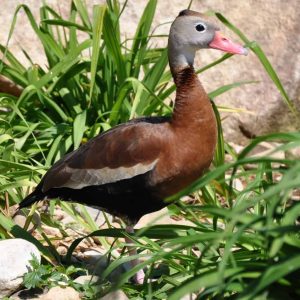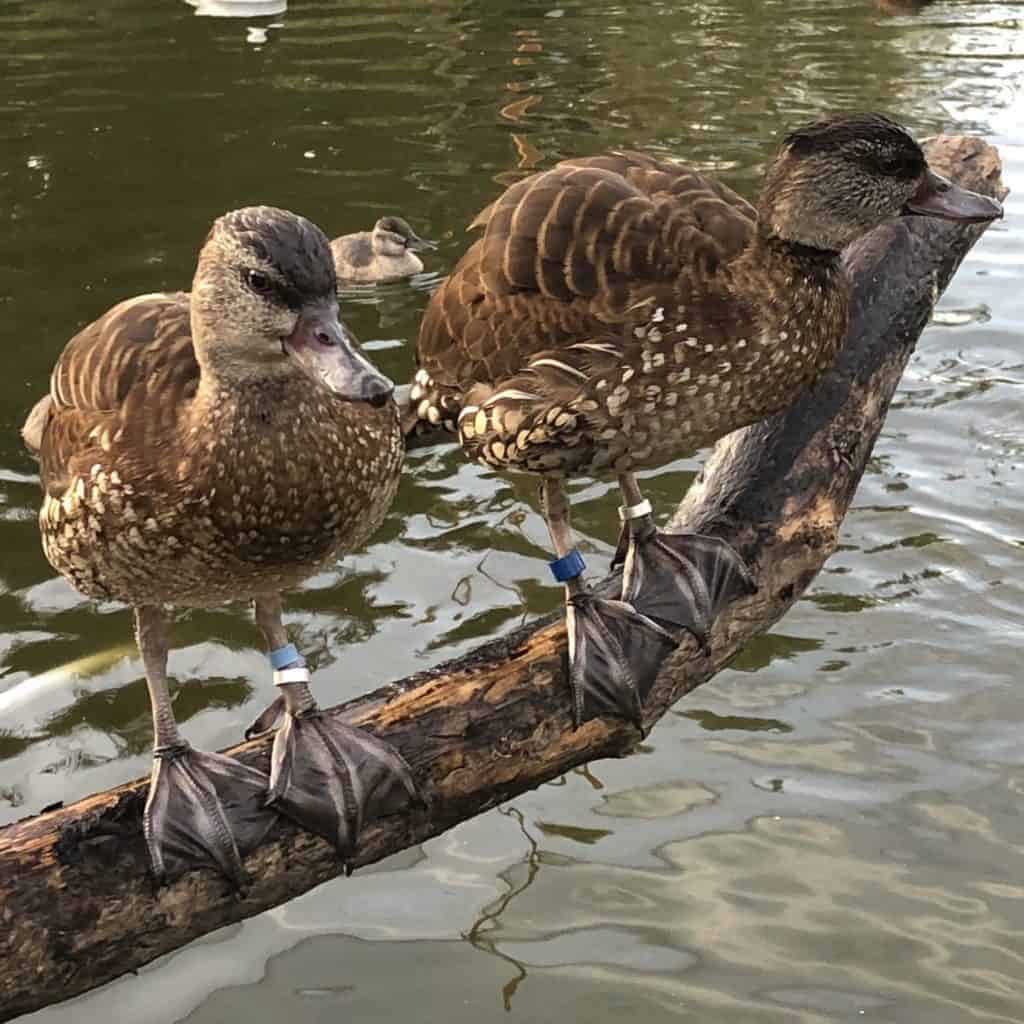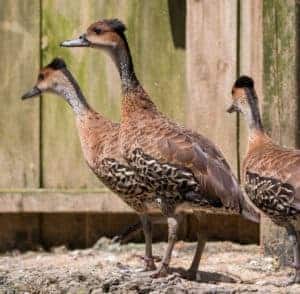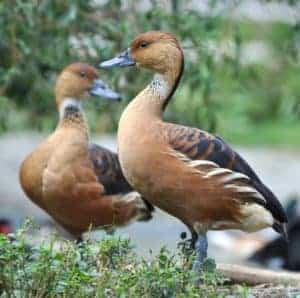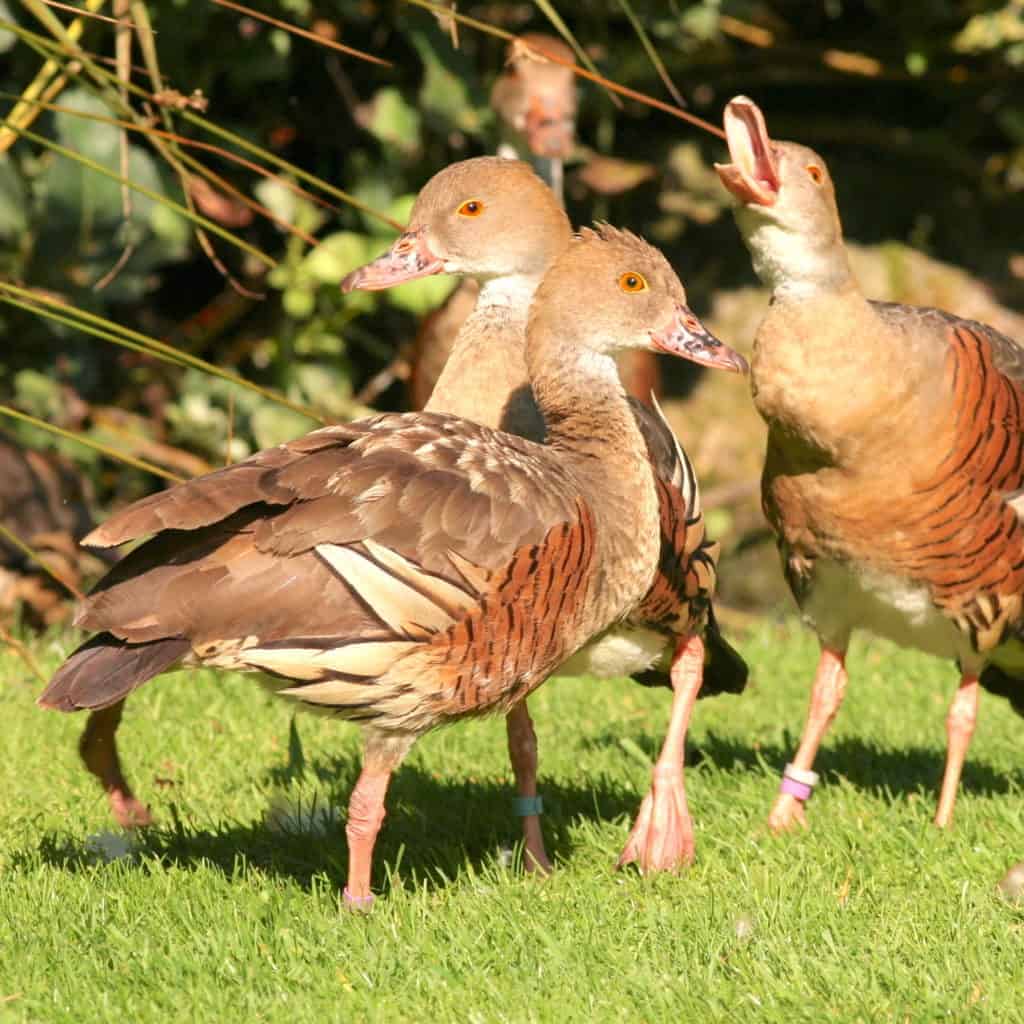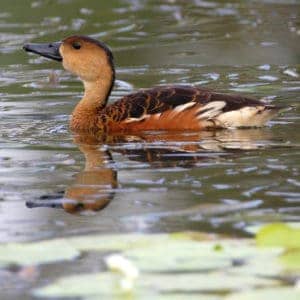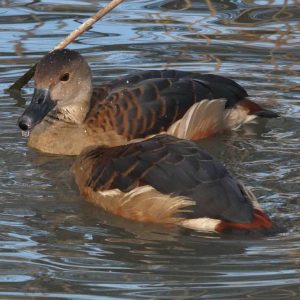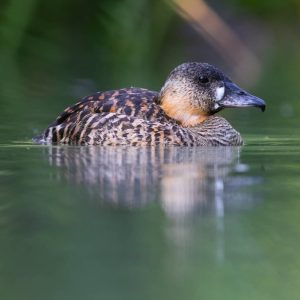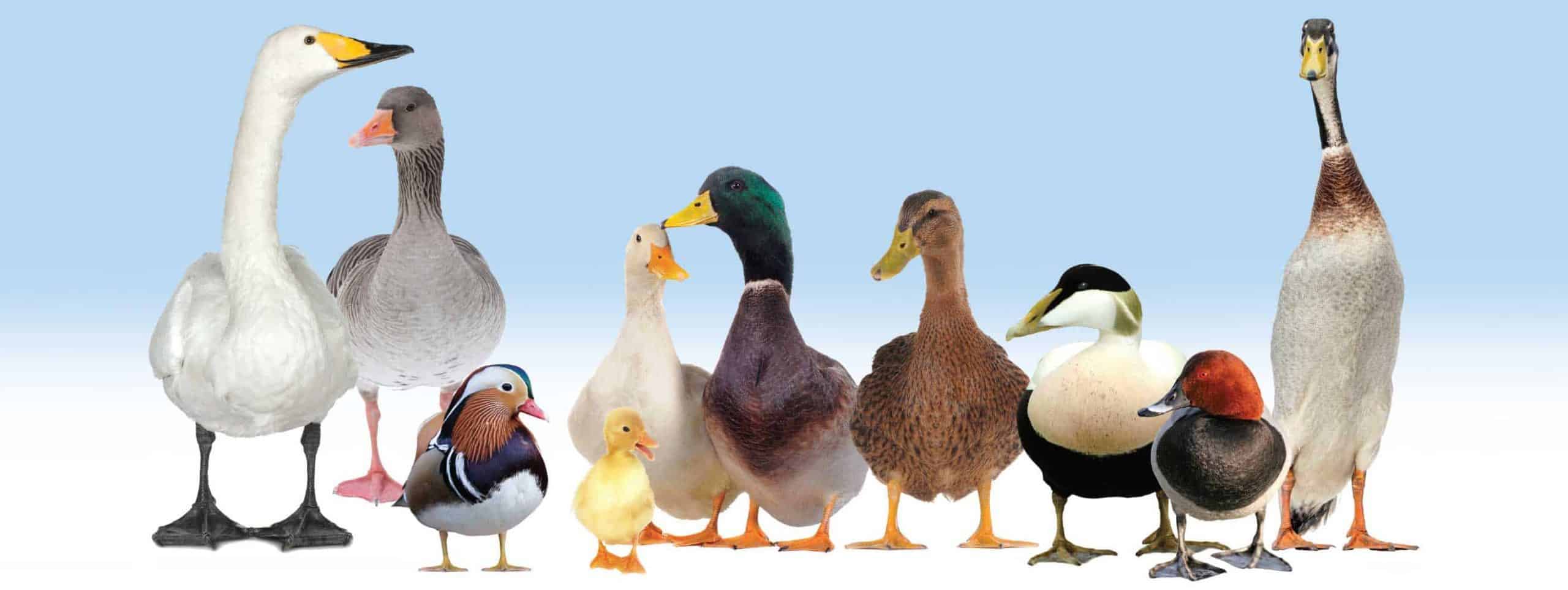Whistling ducks were formerly known as tree ducks, but not all like trees. They are much less arboreal than the perching ducks for instance. The name whistling duck is far more appropriate and descriptive, as all have calls ranging from distinctive high-pitched shrill sounds to clear or squeaky whistles.
Range
Whistling ducks live in the warmer lowland areas of the tropics and subtropics in both the Old and New Worlds. They are mostly sedentary, with movements determined by variations in the availability of water.
Recent DNA studies have shown that the White-backed Duck is most closely related to the whistling ducks, so it is included here.
Appearance
Both sexes are alike and have similar vocal calls and displays. All have broad rounded wings, large feet, fairly long necks and legs and look rather more like small swans or geese, which they are more closely related to than most other ducks.
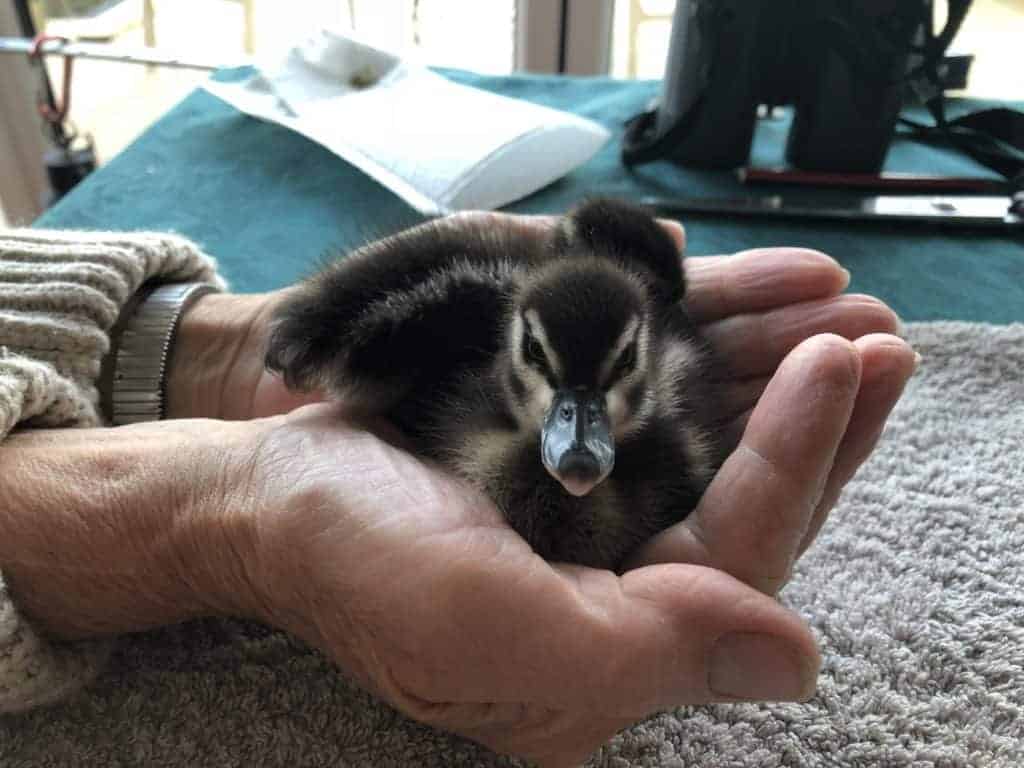
They differ from all the other wildfowl in the colouring of their ducklings. The downy young tend to be strongly patterned, with a characteristic light stripe that extends under the eyes and back around the nape, without any gaps. This contrasting colour pattern is particularly apparent on the duckling of the Black-bellied Whistling Duck.
The adults range in size from the Cuban Whistling Duck, which weighs up to a kilo, down to the Lesser Whistling Duck, which weighs less than half.
Requirements
Whistling ducks are not as commonly kept as dabbling or diving ducks. Fulvous, Black-bellied (or Red-billed) and White-faced are fairly popular in mixed collections, where they will readily feed on the same wheat and breeder pellet mix.
Probably the best species to start with is the Fulvous as they are the hardiest. Some whistling ducks may suffer from frostbite during the winter. However, with a sheltered pond and if possible, an actual shelter, the White-faced and Red-billed species will be quite happy provided a dry substrate is provided.
Another fairly hardy species is the Cuban, but being a little bit bigger than the other species they can be rather quarrelsome.
Behaviour
The pair bonds of whistling ducks are very strong. Pairs spend most of their time together and can often be seen carefully and tenderly preening each other.
The White-faced Whistling Duck seems to be the most highly social and engages in this mutual nibbling (allopreening) frequently. This friendship between pairs is particularly obvious when they are separated as they tend to call loudly to each other until reunited. They can also be stimulated to whistle in response to an imitation of their own call, especially if they cannot see where it is coming from!
In response to a sudden unexpected event, a flock can start a cacophony of squeals that can be quite unnerving. When frightened they sometimes stand absolutely still and quiet with their long necks stretched up as high as they will go.
Whistling ducks are almost entirely vegetarian. They either upend or dive for food, which they can do remarkably well, or sometimes they graze.
Nesting
In a collection they are prepared to use a variety of different nest sites in ground cover, hollow logs, nest boxes, or sometimes even up in trees. Unlike other waterfowl, the nest is not heavily lined with down. The nest is often enthusiastically guarded.
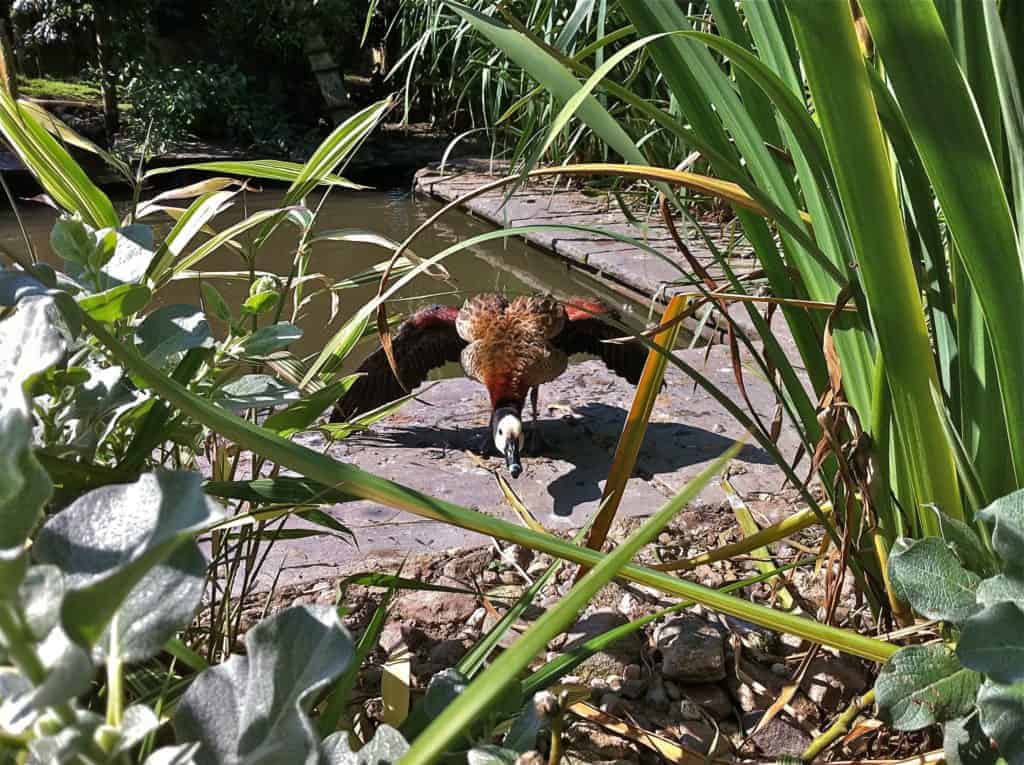
- Whistling ducks lay large clutches of 6 to 16 eggs. These are white or off-white and take 24-31 days to hatch, depending on species. Both sexes take part in incubating and rearing the youngsters. If left to rear their own young, they may be safer separated from the rest of the collection and away from vermin in a covered run unless you have a lot of space. As the adults tend to be so tame, this penning does not put them under any undue stress.
LIST OF THE subfamily DENDROCYGNINAE
- White-faced Whistling Duck – Dendrocygna viduata
- Black-bellied Whistling Duck – D. autumnalis
- Northern Black-bellied Whistling Duck – D. a. fulgens
- Southern Black-bellied Whistling Duck – D. a. autumnalis
- Spotted Whistling Duck – D. guttata
- West Indian Whistling Duck – D. arborea
- Fulvous Whistling Duck – D. bicolor
- Plumed Whistling Duck – D. eytoni
- Wandering Whistling Duck – D. arcuata
- East Indian Wandering Whistling Duck – D. a. arcuata
- Lesser Wandering Whistling Duck – D. a. pygmaea
- Australian Wandering Whistling Duck – D. a. australis
- Lesser Whistling Duck – D. javanica
- White-backed Duck – Thalassornis leuconotus
- T. l. leuconotus
- T. l. insularis



